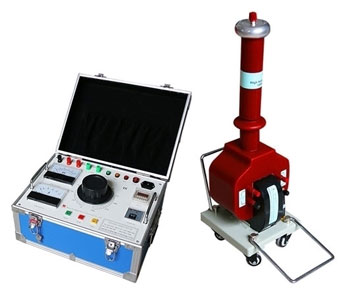What is a Hipot Tester?
Hipot tester, also called dielectric strength tester, is used to carry out the test of applying a specified AC or DC high voltage between the live part and the non-live part of the electric appliance to check the hipot of the insulating material of the electric appliance. In long-term work, electrical appliances must not only bear the effect of rated working voltage, but also bear the effect of overvoltage that is higher than the rated working voltage for a short time during operation(The overvoltage value may be several times higher than the rated working voltage value). Under the action of these voltages, the internal structure of electrical insulating materials will change. When the overvoltage intensity reaches a certain value, it will cause the insulation breakdown of the material. The electrical appliances will not operate normally, and the operator may get an electric shock, endangering personal safety. The main electrical safety test indicators include AC/DC hipot, insulation resistance, leakage current, ground resistance, etc. AC/DC hipot tester is used to test the electrical safety performance of the product under actual working conditions, so it is one of the important instruments for testing the electrical safety performance of the equipment.
The AC/DC hipot testers currently provided on ATO.com range from 1.5 kVA to 10 kVA capacity, which can meet the needs of users for multi-index comprehensive test. The test accuracy is high, which can fully meet the needs of the current development of electrical safety performance testing. Therefore, it is of great to shop our products online.
Basic principle of the hipot tester
The hipot test refers to the test of the hipot capability of various electrical devices, insulating materials and insulating structures. On the premise of not destroying the performance of insulating materials, the process of applying high voltage to insulating materials or insulating structures is called hipot test. Generally speaking, the main purpose of the hipot test is to check the ability of the insulation to withstand the working voltage or overvoltage, and then to check whether the insulation performance of the product equipment meets the safety standards.
The basic principle of the hipot test is that apply a voltage higher than normal operation to the insulator of the device under test for a specified period of time. If the insulation between them is good enough, the voltage applied to it will only produce a small leakage current. If the leakage current of an insulator of a device under test remains within the specified range within a specified time, it can be determined that the device under test can operate safely under normal operating conditions. When carrying out the hipot test, the measurement standards are also different for the tested products with different technical specifications. For general tested equipment, the hipot test measures the leakage current value between the live wire and the chassis. The basic rule is: twice the working voltage of the tested object plus 1000V voltage value is regarded as the standard voltage for testing. The test voltage of some products may be higher than this specified value. After the test, the test voltage must gradually drop to zero within the specified time.
Structure of the hipot tester
- Step-up part
Pressure rising part consists of the voltage regulating transformer, the step-up transformer, the power connection and cut-off switch. The voltage is connected to the voltage regulating transformer through turning on or cutting off the switch, and the output of the regulating transformer is connected to the step-up transformer. Users only need to adjust the voltage regulator to control the output voltage of the step-up transformer.
- Control part
The control part is composed of current sampling, time circuit and alarm circuit. When the control part receives the start signal, the instrument immediately turns on the step-up part power supply. When the current of the circuit under test exceeds the set value, an audible and visual alarm will be issued immediately to cut off the power supply of the step-up circuit. When the reset or time out signal is received, it is necessary to cut off the boost circuit power supply.
- Display circuit
The display shows the output voltage value of the step-up transformer, the current value of the current sampling part and the countdown of the time circuit.

